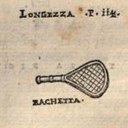0231 The Great Ball Game Hall of Prague Castle: Its Appearance and Function in the Context of Habsburg Renaissance Ballcourts
Identifiers (Article)
Identifiers (Files)
Abstract
The Great Ball Game Hall of Prague Castle, dating from the years 1567–1569 and built for Emperor Maximilian II, presents an exceptional architectural realization. Apart from the representative appearance of the Great Ball Game Hall also its unusual scale is singular: It is roughly twice as long as was the custom and as was recommended by the Trattato del giuoco della palla by Antonio Scaino (Ferrara 1555). The dimensions of the building are linked to the question of how the Great Ball Game Hall was actually used. Archival sources from the time of the reign of Emperor Rudolf II indicate that it was used probably for the pallone game and not for the game of tennis. From the framework given by the historiography of Renaissance sports and recreation evolves the hypothesis that also covered buildings for the pallone game existed – contrary to the dominant opinion that the game was played exclusively outdoors.
Statistics


License

This work is licensed under a Creative Commons Attribution-NonCommercial-NoDerivatives 4.0 International License.



